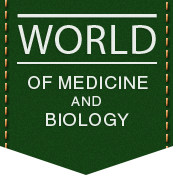| About the author: |
S. O. Korol, A. L. Chelishvili, I. P. Palii, O. Ya. Musenko, N. V. Svystak |
| Heading |
CLINICAL MEDICINE |
| Type of article |
Scentific article |
| Annotation |
There was a comparative integrated clinical examination of 93 persons with combined combat thermomechanical injuries, 87 persons with isolated extremity injuries involving bone fractures and 65 persons with isolated burn injuries. The said examination covered the recording of integral body rheography, study of coagulation tests results, biochemical, immunological blood indicators at admission on 1–3 and 5–7 days after the injury. The authors believe that only persons with extremely severe combined combat thermomechanical injuries, when there are two or more isolated injuries (wounds and burns), experience severe homeostasis disorders, which is demonstrated by the mutual aggravation syndrome with central hemodynamics as the leading link in its pathogenesis. |
| Tags |
mutual aggravation syndrome,combined combat thermomechanical injuries,shock |
| Bibliography |
- Chai JK, Cai JH, Deng HP, Zou X, Liu W, Hu Q, et al. Role of neutrophil elastase in lung injury induced by burn-blast combined injury in rats. Burns. 2013; 39(4):745–53. doi: 10.1016/j.burns.2012.08.005.
- Jihong Z, Zhengguo W, Peifang Z. Clinical guideline to burn–blast combined injuries. Chin J Traumatol. 2013; 29(9):809–12.
- Khomenko IP, Korol SO, Khalik SV. Clinical and epidemiological analysis of the structure of combat surgical trauma during an antiterrorist-operation, operation of the joint forces in the east of Ukraine. Ukrainian J Military Med. 2021; 2:5–13.
- Li Y, Yang GM, Zhao YB, Li BC. Chinese Journal of Traumatology. Wounding characteristics and treatment principle of ground anti–armored vehicle ammunition against armored crew. 2023;26(2): 47–51. doi: 10.1016/j.cjtee.2023.03.002.
- Porter C, Tompkins RG, Finnerty CC, Sidossis LS, Suman OE, Herndon DN. The metabolic stress response to burn trauma. Сurrent understanding and therapies. 2016; Lancet 388: 1417–1426. doi: 10.1016/S0140–6736(16)31469–6.
- Stanojcic M, Abdullahi A, Rehou S, Parousis A, Jeschke MG. Pathophysiological response to burn injury in adults. Ann. Surg. 2018; 267(3): 576–584. doi: 10.1097/SLA.0000000000002097.
- Standl T, Annecke T, Cascorbi I, Heller AR, Sabashnikov A, Teske W. The Nomenclature, Definition and Distinction of Types of Shock. 2018;115(45):757–768. doi: 10.3238/arztebl.2018.0757.
- Trutyak I, Hayda I, Bohdan I, Prokhorenko G, Medzyn V. Features of modern combat surgical trauma. Proceedings of the Scientific Society named after Shevchenko. Medical sciences. Medical collection. 2015; 41(26): 109–116.
- Yamamoto R, Udagawa K, Nishida Y, Ono S, Sasaki J. Damage control orthopedics and decreased in hospital mortality. A nationwide study. Injury. 2019;19:24. doi: 10.1016/j.injury.2019.09.028.
- Zhou J, Qiu J. Explosive Blast Injuries. Burn-Blast Combined Injury, 2023; 31(3): 375–390. doi: 10.1007/978–981–19–2856–7_25.
|
| Publication of the article |
«World of Medicine and Biology» №2(84), 2023 year, 098-101 pages, index UDK 616.718.41–001.514–08–035–089.2 |
| DOI |
10.26724/2079-8334-2023-2-84-98-101 |
